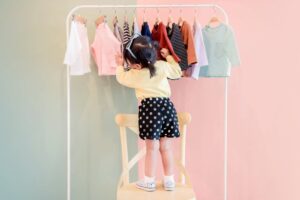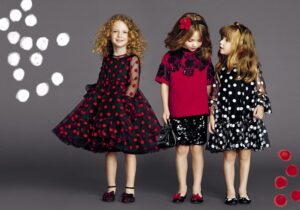Introduction
Finding the perfect baby dress isn’t just about style—it’s about comfort, practicality, and capturing those precious moments. Whether you’re dressing your little one for a special occasion or everyday wear, understanding what to look for can make all the difference. Let’s dive into everything you need to know about baby dresses!
Why Baby Dresses Are Important
Baby dresses are more than just adorable outfits; they play a crucial role in a baby’s comfort and development. The right dress can ensure that your baby is comfortable while allowing them to move freely. Additionally, baby dresses can be a fun way to express your child’s personality and style from an early age.
Why Baby Dresses Are More Than Just Clothing
A Reflection of Personality
Baby dresses often reflect the personality parents wish to showcase for their little ones. From frilly frocks to minimalistic rompers, each choice tells a story.
Blending Comfort and Fashion
The ideal baby dress balances aesthetics with comfort. Babies have sensitive skin, and the wrong material or fit can lead to irritation. That’s why understanding fabric and design is crucial.
Key Considerations When Choosing a Baby Dress
1. Comfort is Key
- Babies have sensitive skin, so it’s essential to choose dresses made from soft, breathable fabrics like cotton.
- Avoid dresses with too many embellishments that could cause discomfort.
2. Size Matters
- Babies grow quickly, so always consider buying a slightly larger size.
- Look for adjustable features like elastic waistbands or straps to accommodate growth.
3. Seasonal Appropriateness
- Choose lightweight fabrics for summer and thicker, warmer materials for winter.
- Consider layering options for added warmth in colder months.
4. Ease of Dressing
- Opt for dresses with buttons or zippers that make dressing and undressing easy.
- Ensure the dress allows for easy diaper changes.
5. Style and Occasion
- Casual dresses for everyday wear should be simple and comfortable.
- Special occasion dresses can be more elaborate but should still prioritize comfort.
Popular Baby Dress Styles
1. Onesie Dresses
- Combines the practicality of a onesie with the style of a dress.
- Ideal for active babies who need the freedom to move.
2. Tutu Dresses
- Perfect for special occasions like birthdays or photoshoots.
- Features a fluffy tutu skirt that adds a touch of elegance.
3. Smocked Dresses
- Classic style with intricate smocking on the bodice.
- Great for formal events or traditional gatherings.
4. Pinafore Dresses
- Versatile style that can be layered over a onesie or worn on its own.
- Suitable for both casual and semi-formal occasions.
Trending Colors and Patterns in Baby Dresses
1. Pastel Shades
- Soft colors like lavender, baby blue, and pale pink are timeless.
- Ideal for both casual and formal dresses.
2. Floral Prints
- Flowers add a touch of nature and elegance to baby dresses.
- Available in various styles, from subtle to bold.
3. Animal Prints
- Fun and playful, perfect for casual wear.
- Adds a bit of personality to your baby’s wardrobe.
4. Polka Dots
- A classic pattern that never goes out of style.
- Suitable for both everyday wear and special occasions.
Caring for Baby Dresses
1. Washing
- Always follow the care label instructions.
- Use a gentle detergent to avoid skin irritation.
2. Drying
- Air drying is recommended to maintain the fabric’s integrity.
- Avoid using high heat in the dryer, which can shrink the fabric.
3. Storage
- Store dresses in a cool, dry place to prevent mildew.
- Consider hanging special occasion dresses to avoid wrinkles
Finding the Right Fit: What Parents Should Know
1. Age-Based Sizing
Most baby dresses come with age labels (e.g., 0–3 months, 6–9 months). However, babies grow fast, so sizing up is always a smart move.
2. Easy-On and Easy-Off
Buttons, zippers, or stretchy necklines make dressing and undressing a breeze.
3. Room for Growth
Opt for dresses with adjustable features like drawstrings or elastic waistbands.
Top Brands Offering High-Quality Baby Dresses
1. Carter’s
Known for affordability and quality, Carter’s offers a wide range of styles suitable for all occasions.
2. Baby Gap
Focusing on trendy yet comfortable designs, Baby Gap is a favorite among parents.
3. H&M Baby
With eco-friendly options and chic styles, H&M is perfect for fashion-forward parents.
4. Boutique Brands
Boutique brands like Tea Collection or Janie and Jack provide unique, handcrafted designs that stand out.

Current Trends in Baby Dresses
1. Sustainable Fabrics
Eco-conscious parents are opting for organic cotton and bamboo fabrics.
2. Gender-Neutral Styles
Neutral tones and minimalist designs are gaining popularity.
3. Vintage Revival
Dresses with vintage cuts, Peter Pan collars, and retro prints are trending.
Where to Buy the Best Baby Dresses
1. Online Marketplaces
- Amazon: Offers a vast selection of affordable options.
- Etsy: Great for unique, handmade dresses.
2. Retail Stores
- Target: Combines affordability with quality.
- Walmart: Perfect for budget-friendly everyday dresses.
3. Local Boutiques
Support local artisans and discover one-of-a-kind designs.
How to Accessorize Baby Dresses
1. Hair Accessories
Headbands, bows, and caps can add a charming touch.
2. Footwear
Soft-soled shoes or booties complete the look while keeping tiny feet cozy.
3. Functional Add-Ons
Add bibs or cardigans for practicality without sacrificing style.
Why Investing in Quality Baby Dresses Matters
High-quality baby dresses not only look better but also last longer, making them ideal for passing down to siblings or preserving as keepsakes.
Conclusion
Choosing the perfect baby dress is about more than aesthetics—it’s about finding a balance between comfort, functionality, and style. With so many options available, you can ensure your baby looks adorable while staying comfortable all day long.
FAQs
1. What is the best fabric for baby dresses?
Cotton is the best fabric for daily wear due to its softness and breathability.
2. How often should baby dresses be washed?
Wash after every wear, especially if the baby has sensitive skin or the dress is stained.
3. Can I buy baby dresses online?
Absolutely! Many reputable retailers and marketplaces offer a variety of styles and sizes online.
4. Are fancy baby dresses worth it?
For special occasions, yes. Just ensure they’re comfortable and hypoallergenic.
5. How can I ensure the right size for my baby?
Refer to size charts, consider your baby’s growth rate, and opt for adjustable features.


